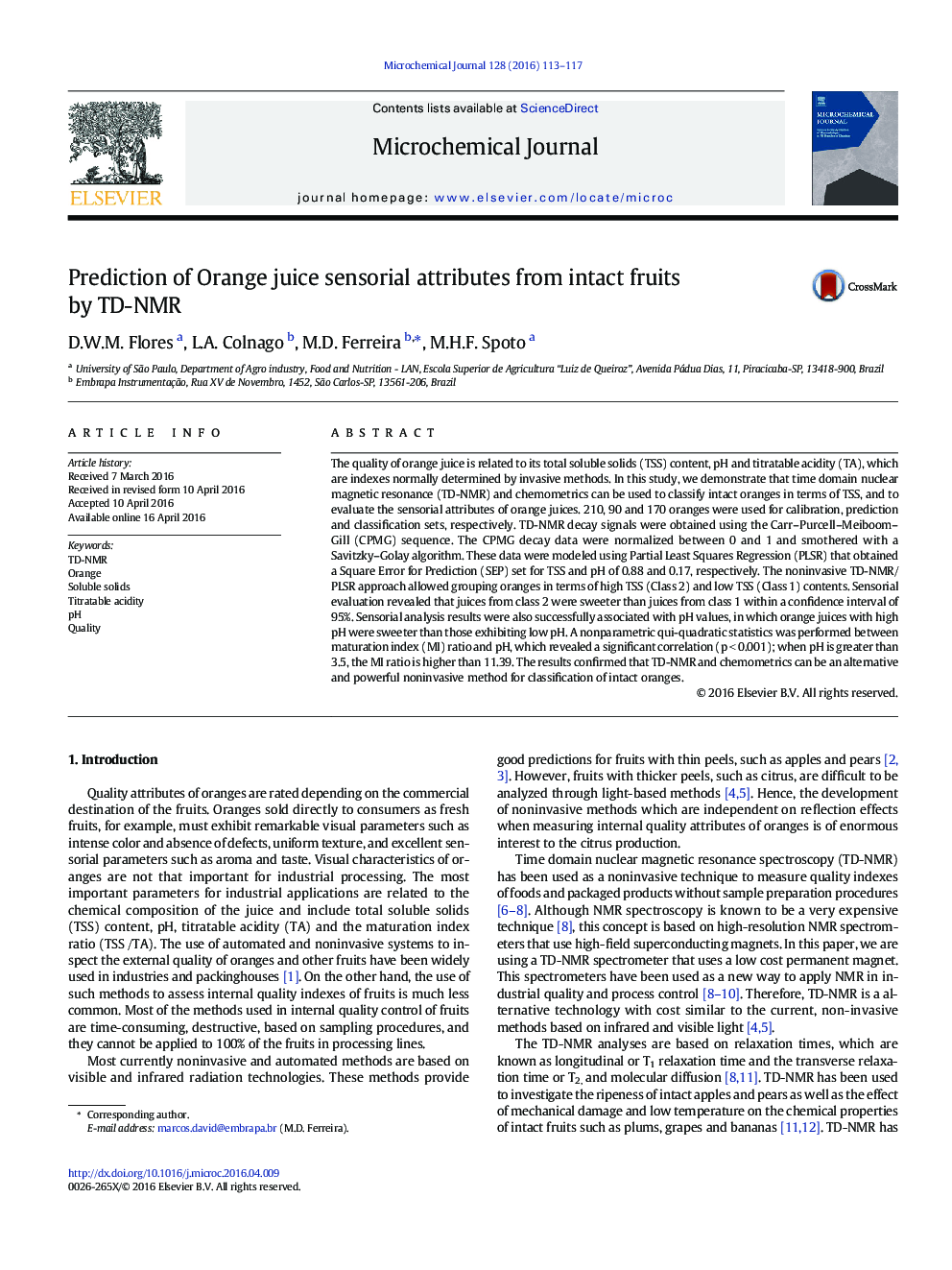| Article ID | Journal | Published Year | Pages | File Type |
|---|---|---|---|---|
| 1227549 | Microchemical Journal | 2016 | 5 Pages |
•Transverse relaxation data measured by TD-NMR and modeled with partial least squares regression (PLSR) can be used as a rapid and noninvasive approach to predict internal quality and sensorial attributes of oranges.•The classifications of oranges by Soluble Solids content using TD-NMR data and PLSR models presented significant effect on paired comparison test with the sensory analysis of the sweet attribute.•TD-NMR and chemometrics can be an alternative and effective noninvasive method for classification of intact oranges.
The quality of orange juice is related to its total soluble solids (TSS) content, pH and titratable acidity (TA), which are indexes normally determined by invasive methods. In this study, we demonstrate that time domain nuclear magnetic resonance (TD-NMR) and chemometrics can be used to classify intact oranges in terms of TSS, and to evaluate the sensorial attributes of orange juices. 210, 90 and 170 oranges were used for calibration, prediction and classification sets, respectively. TD-NMR decay signals were obtained using the Carr–Purcell–Meiboom–Gill (CPMG) sequence. The CPMG decay data were normalized between 0 and 1 and smothered with a Savitzky–Golay algorithm. These data were modeled using Partial Least Squares Regression (PLSR) that obtained a Square Error for Prediction (SEP) set for TSS and pH of 0.88 and 0.17, respectively. The noninvasive TD-NMR/PLSR approach allowed grouping oranges in terms of high TSS (Class 2) and low TSS (Class 1) contents. Sensorial evaluation revealed that juices from class 2 were sweeter than juices from class 1 within a confidence interval of 95%. Sensorial analysis results were also successfully associated with pH values, in which orange juices with high pH were sweeter than those exhibiting low pH. A nonparametric qui-quadratic statistics was performed between maturation index (MI) ratio and pH, which revealed a significant correlation (p < 0.001); when pH is greater than 3.5, the MI ratio is higher than 11.39. The results confirmed that TD-NMR and chemometrics can be an alternative and powerful noninvasive method for classification of intact oranges.
